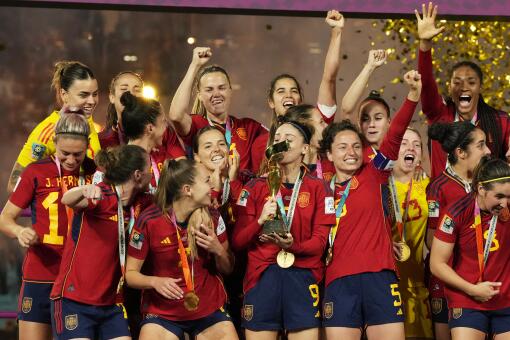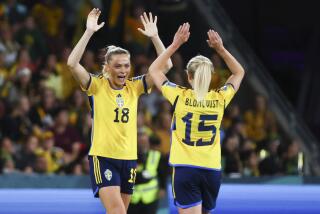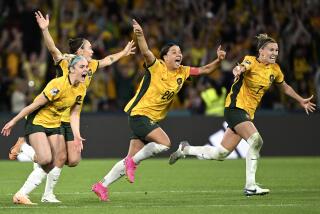Australia is on Sam Kerr ‘golden calf watch,’ but it’s already a World Cup winner
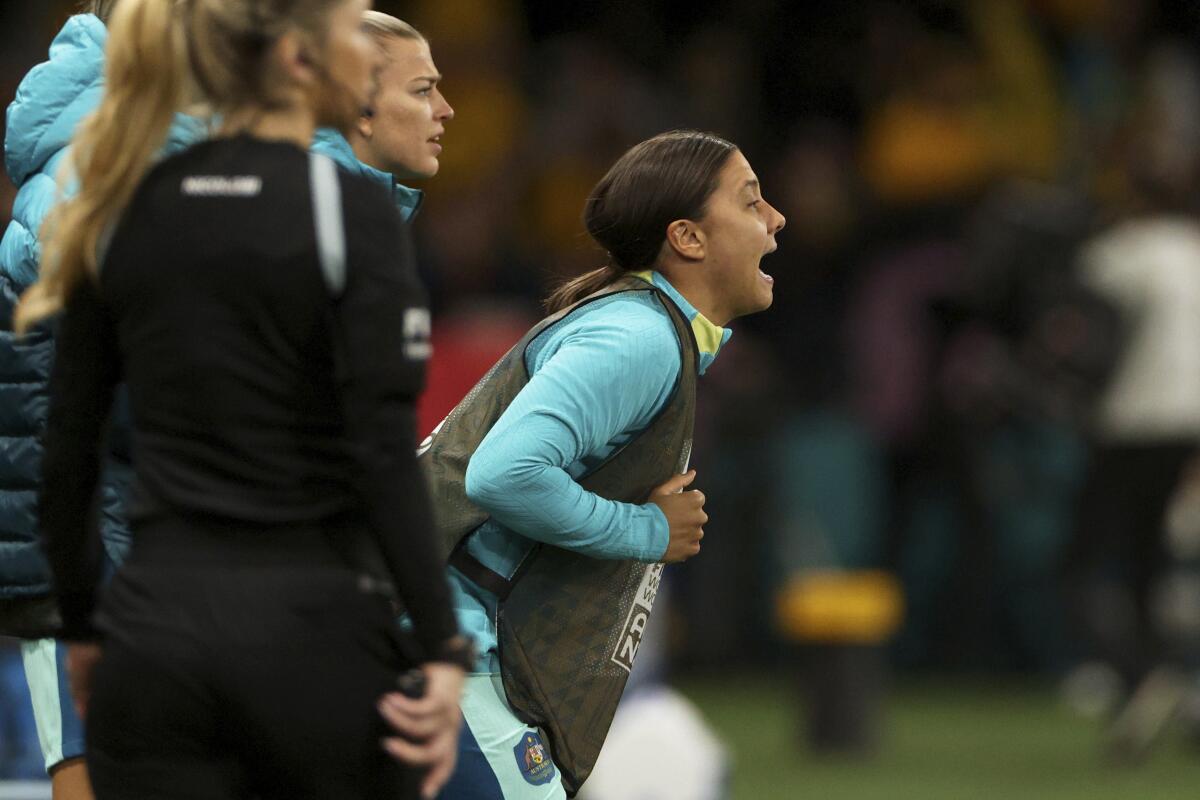
MELBOURNE, Australia — The most important muscle in Australia belongs to Sam Kerr, the captain and leading scorer for the country’s women’s soccer team.
When Kerr hurt her left calf on the eve of a World Cup that Australia is co-hosting, the story transfixed the country. The Sydney Morning Herald called the mystery surrounding Kerr’s estimated injury recovery time “a national obsession.” When she limped through an airport with her teammates after Australia’s opening game, cameras followed her and pundits breathlessly opined on her condition.
Is she getting better? Is she getting worse? For the Guardian, the first 2½ weeks of the World Cup were known as “Sam Kerr Calf Watch.”
The focus on the fate of the golden calf is understandable. Australia has been pointing toward this World Cup since it first bid to host the event in 2017 and Kerr, the team’s most talented and popular player, was seen as key to its success. At 29, the Chelsea forward is in the prime of what has already been an outstanding career. The all-time NWSL scoring leader, she has been named player of the year on three continents.
With Kerr leading the Matildas, they ranked 10th in the world and have become one of the strongest sports brands in the country during the past three years. But without Kerr, who led Australia to the quarterfinals of two World Cups, the team had little hope of going further this summer, when they’re playing at home with the whole country watching.
“The FIFA Women’s World Cup 2023 isn’t just a tournament, it’s a legacy we’re creating for the future,” said Sarah Walsh, a former national team captain and now head of women’s football, World Cup legacy and inclusion. “The work is ongoing, but the impact will reverberate through the generations.”
Australia made it through the group stage without its captain, who returned to training last week and is expected to be available for Monday’s round of 16 game with Denmark in Sydney. Yet despite the public panic, the behind-the-scenes work to get Kerr ready was methodical and steady, said Paddy Steinfort, performance director for Football Australia who previously worked for more than a half-dozen NBA, MLB and NFL teams.
“We’ve definitely faced high expectations coming in, and then a wild start with some early injuries. But we’ve adapted,” Steinfort said. “Like any do-or-die tournament, this is about dealing with the hand we get dealt and empowering our people to do their thing, trusting the scoreboard and results will take care of themselves. Luck, or the ‘soccer gods,’ haven’t been with us so far, but we’re focusing on one moment and one challenge at a time and the culture we’ve built is strong enough to carry us through.”
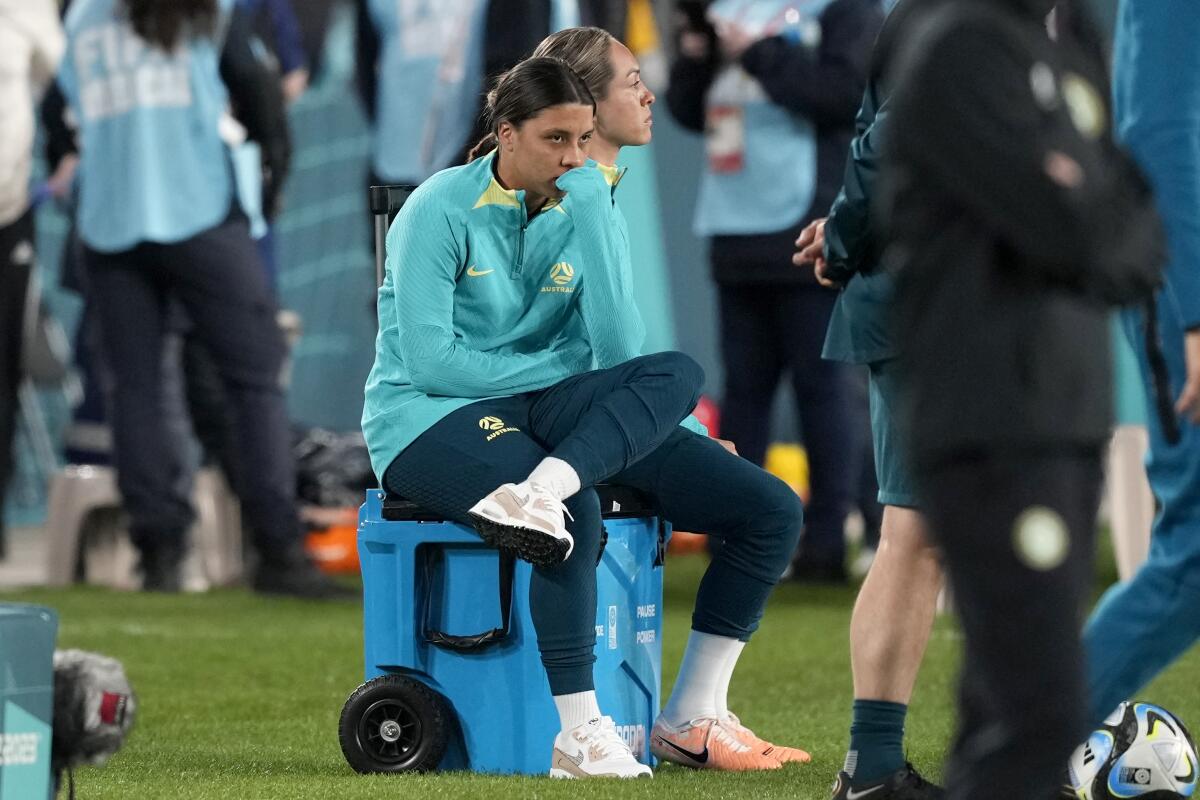
But if Kerr’s injury was all anyone in Australia was talking about, that didn’t include Steinfort and the medical staff — or even Kerr herself. With her dream of playing in a World Cup at home in doubt, she remained a good teammate, upbeat at training sessions, joyous in sideline celebrations — she even helped collect equipment.
“By way of protocol, we never talk about the level of injury unless the athlete requests it,” Steinfort said. “Our rehab processes are based on clinical markers, not time frames, so we’ve deliberately not given daily updates to minimize stress on the players and remove excess noise. The mental aspect of recovering from an injury in such a short period is just as crucial.”
Kerr reportedly excelled in that part of her rehab.
Yet as much as the World Cup can do for Australian soccer, this moment is bigger than just one sport. When the country launched its bid to host the tournament, it was seen as a chance to bring the Down Under front and center for the rest of the planet, attracting tourists, investment and sponsorships — and the government reportedly invested more than $164 million in the World Cup and related projects to make that happen.
All that became more important after the coronavirus pandemic isolated Australia and its co-host, New Zealand, for more than two years. The World Cup is their chance to bounce back.
“We bid for the World Cup 2023 because we believe in the transformative power of football,” said James Johnson, CEO of Football Australia. “This tournament is our canvas to paint a new picture for the world to appreciate, one where women’s football is celebrated, respected, and cherished just as much as any other sport.”
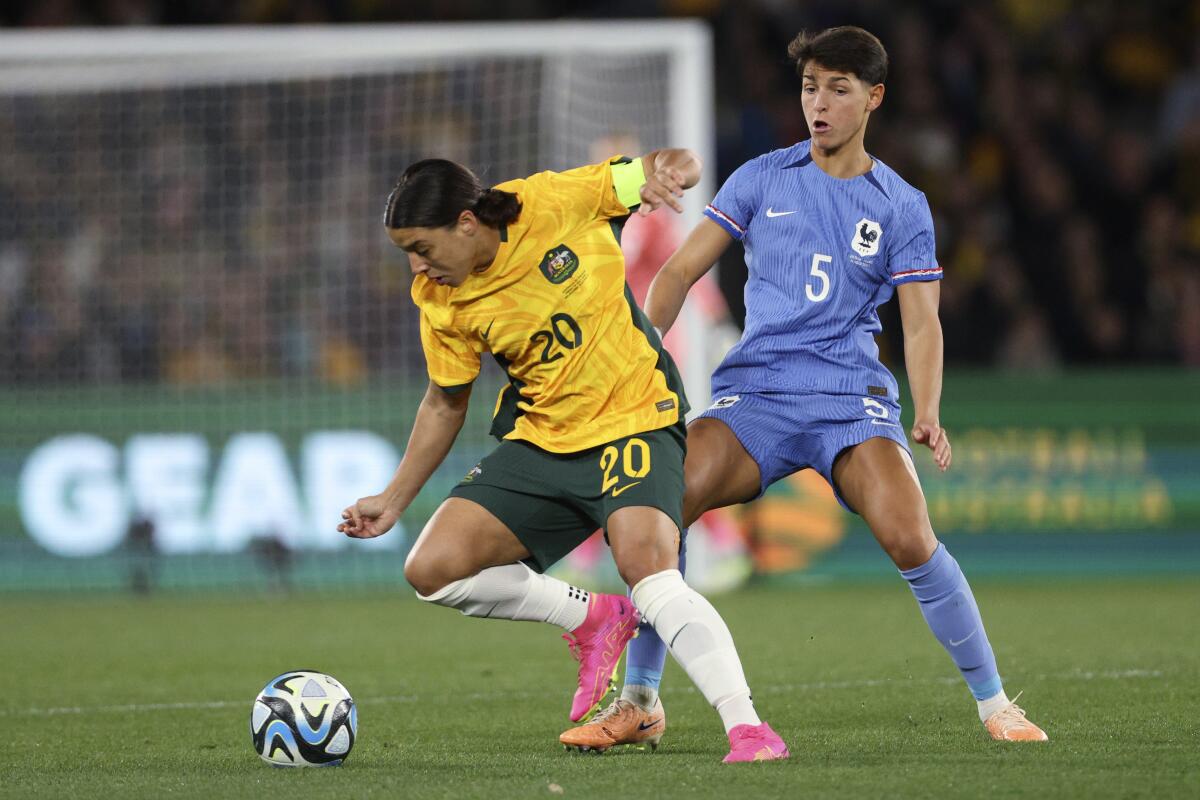
So far, the tournament has overperformed. More than 1.7 million tickets have been sold, which will make it the best-attended women’s World Cup in history. The 24 group-stage games in Australia drew an average attendance of 29,534; only two full World Cups did better. And with the knockout stage starting, those numbers will swell.
“The potential impact on the game in Australia — on the sporting landscape in general — is already evident,” Steinfort said.
But inside the team bubble, Steinfort and his staff have tried to keep the outside pressure there — outside.
“While the motivation of an entire country can propel some to a new level, for others it may be counterproductive,” he said. “We’ve taken an individualized approach to each player’s preparation, giving them everything they need and nothing they don’t.
“Pressure is certainly present, but as Sam herself said pressure is a privilege and we’re grateful for the position we’re in. The key to managing this pressure is being in the moment and recognizing what we need to do rather than focusing on how we feel. We just try to help the players and coaches to trust the process and the work we’ve put in to get ready for these moments.”
Meanwhile, in the rest of Australia, the fate of the golden calf remains an obsession. And Sam Kerr Calf Watch continues.

